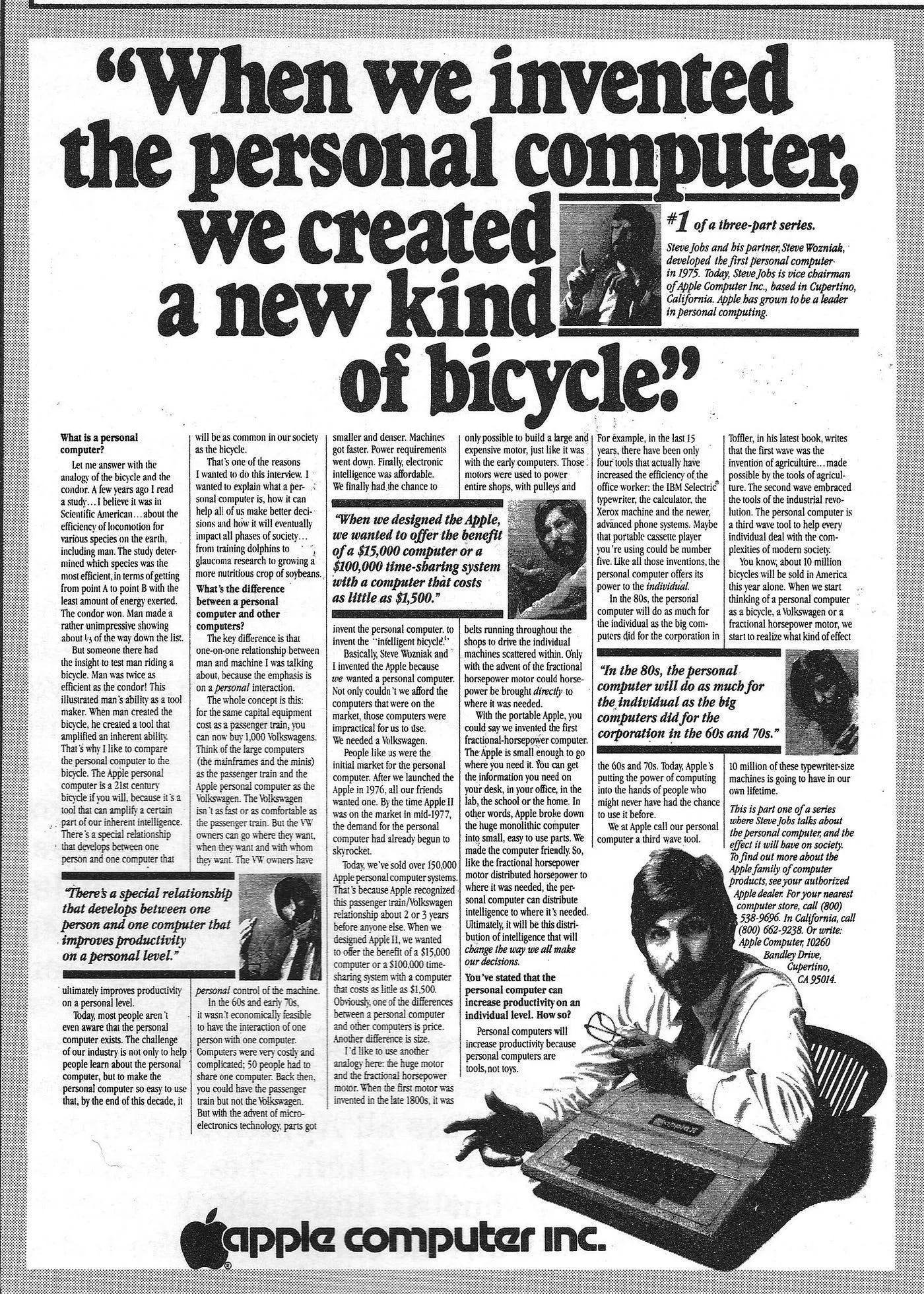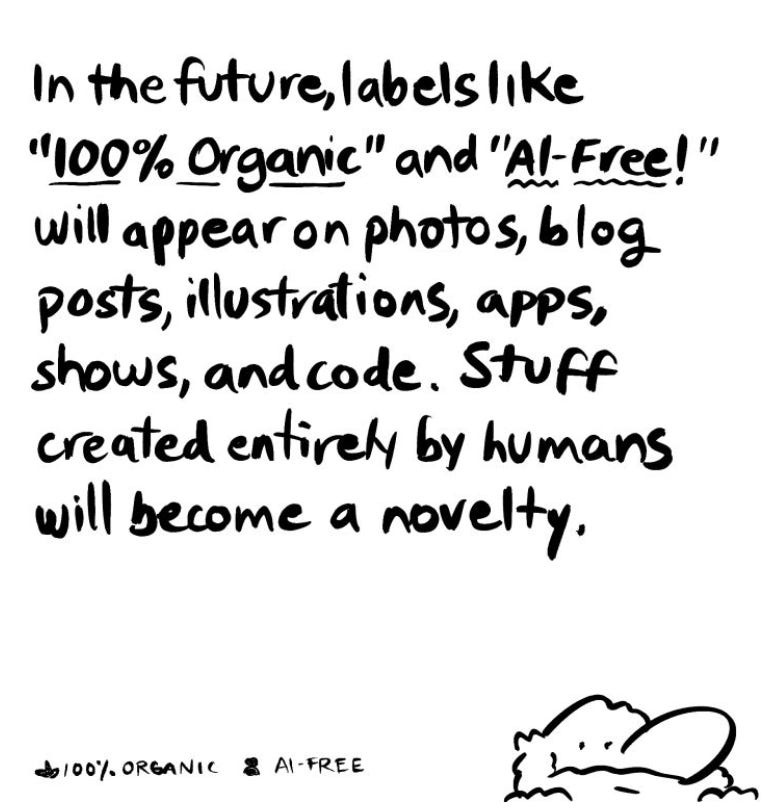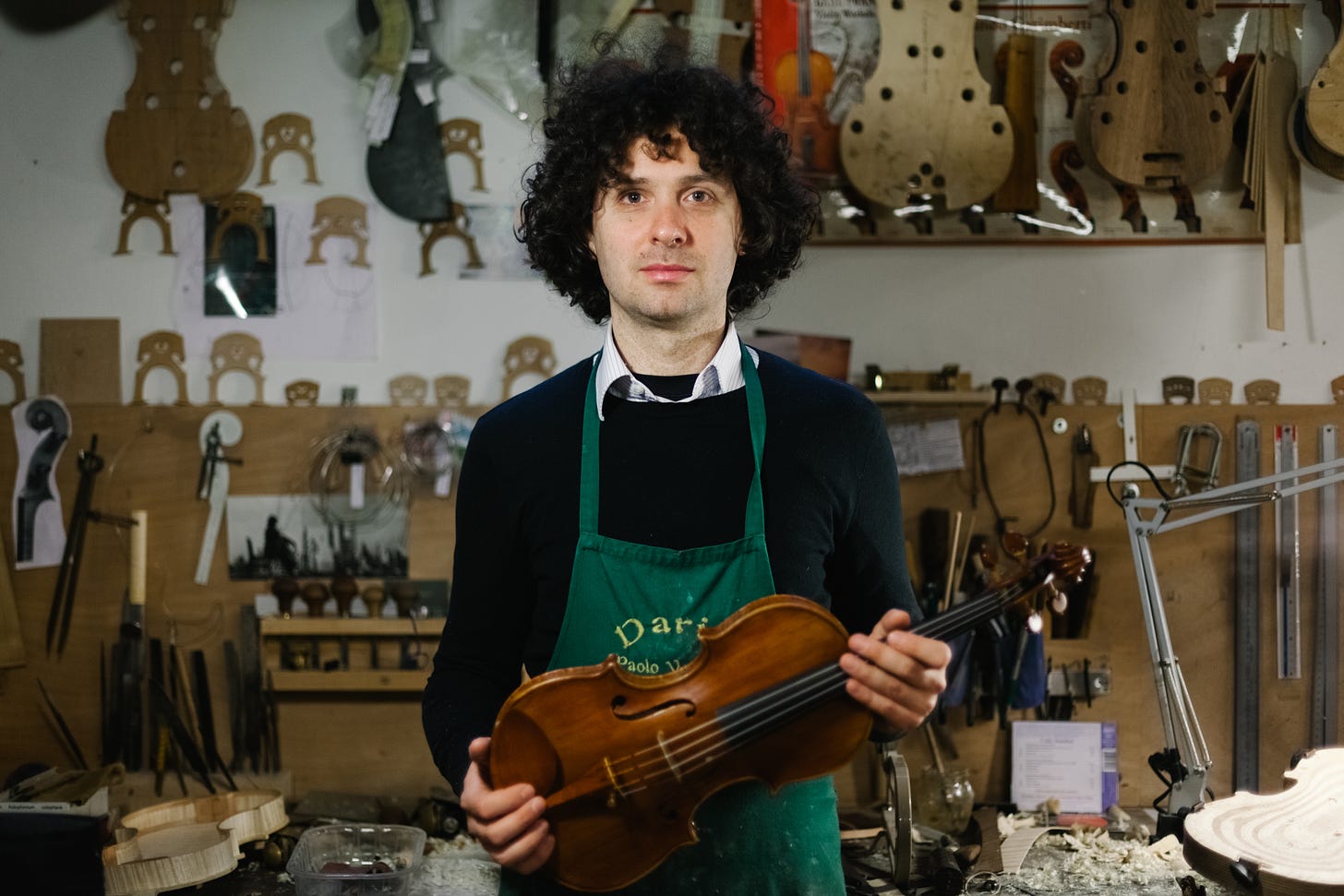The Handmade Internet
Handmade in the Digital Age: Preserving Authenticity in an AI-Driven World
When we invented the personal computer, we create a new kind of bicycle… a new man-machine partnership… a new generation of entrepreneurs.”
- Steve Jobs, 1980
In 1980, Steve Jobs likened the personal computer to a modern form of the bicycle. Half a century later, consumer-grade AI has radically advanced the metaphor.
Now, those once-modest bicycles that Apple Computer built in Cupertino, California have transformed into high-performance sports cars.
With the explosion of AI, we gained the ability to predict and model complex scenarios, translate languages in real-time, automate everyday tasks with simple prompts, and enhance our decision-making with access to vast amounts of information.
Now, we find ourselves learning how to 'drive' our computers again, a historical moment that creates both new opportunities and existential questions for humans of the internet.
At Chapter One, we spent the past year doing thesis work in preparation for our next fund, Page Three.
One of our core thesis areas that I am leading is called Internet of Trust. The basic premise of our thesis is that:
Consumer confidence in FAANG companies is at an all-time low.
The increasing prevalence of AI will exacerbate this growing distrust.
Consumers will ultimately spend time and money on software and internet services that can successfully secure their trust.
As I began exploring the Internet of Trust thesis in Q3 2022, OpenAI released GPT-3 and a thesis began to take shape.
One question I found myself deeply focused on was, “Will consumers care if the software and content they consume is created by a human?”
The romantic former English major in me wanted to believe that — yes, we care if a real human creates the content we consume and the software we use.
But at the end of the day, we just want to be entertained online. Whether the origins of that entertainment come from a human, might not be important.
And even if we want our content to be handmade, how will we be able to tell what is AI generated, created by a human, or a combination of both?
The image above was created by one of our portfolio founders, Pablo Stanley. I love the concept of content someday carrying labels like "AI-Free."
In 2005, I spent a semester in Florence, Italy. Each morning on my walk to campus, I passed a violin maker, hard at work in his workshop by 8 a.m., meticulously crafting custom violins by hand.
One day, I stopped to chat with him. He shared that the tools he used were the same ones his grandfather had relied on. His father had been a violin maker too, continuing the family tradition.
I remember being struck by the beauty of it all—that artisans like him still existed, keeping their craft alive in a fast-changing world.
The term "handmade" has always carried a distinctive significance, denoting a product or piece painstakingly crafted by human hands, as opposed to being mass-produced by machines.
In recent years, the term has evolved to "handcrafted" — an attempt to further emphasize the exclusion of machinery from the creative process. A handcrafted item is entirely created by human hands, using rudimentary tools such as knives, needles, and brushes.
The appeal of a "handmade" or "handcrafted" label lies in the assurance of quality, consistency, and immaculate craftsmanship. People favor luxury products made by human hands or with substantial human involvement in their creation.
Is the same true for what we consume online?
The internet has reached an important moment, with much uncertainty over the future of "handmade" digital creations like photography, blog posts, illustrations, applications, and code.
The rise and widespread use of generative AI is expected to diminish the presence of handcrafted digital creations—which unsettles many creatives. Living in Los Angeles, I hear this concern from writers all the time.
Internet native creators like engineers and designers are less worried for now.
More than 40% of the code committed to GitHub daily is now created with the help of code generation tools. Designers are increasingly open to using generative plugins for Figma, although these tools have yet to match the effectiveness of code generation tools.
As the AI landscape continues to evolve, I often ask myself: what parts of the internet do we want to be handmade?
I’m guessing you don’t care if the Substack codebase hosting this content was built with the help of code generation tools. You probably also don’t mind if the UX/UI was designed with the help of generative tools, though a discerning eye might notice.
But you likely care if this article was written by ChatGPT because it comes from a writer whose content you chose to subscribe to—you didn’t sign up to read the output of large language models.
Ultimately, preserving the Handmade Internet will lie in finding the right balance between preserving the human touch and embracing the possibilities of AI.
Generative AI products are incredible at unlocking new creative superpowers. Take Suno, for example—if you’re curious about music, you can create a song in just a minute.
For most of us who aren’t professional musicians but have always dreamed of making music, it bridges the gap between aspiration and skill.
Still, I hope the internet will have its own Florence-like artisans—its digital violin makers. Writers, designers, and creatives who dedicate themselves to crafting entirely by hand.
Maybe it’s a romantic idea, but some things are simply better when they’re handmade.
Authors note:
The New Internet is almost entirely AI-free, and I’ll do my best to keep it that way. But would it matter to you if it wasn’t? Reply to this email and let me know—Jeff Morris Jr. (the real one) will respond.







Jeff, thanks for crafting your thoughts on this topic. I tend to think people don't like to feel duped -- with written content, they don't want to read something they believe to be human-generated and then find out they were misled. Same with digital art, video, music, etc. With entertainment, often it's fake/staged already & people know this internally.
AI-generated code is interesting because it's lowered the barrier-to-entry that previously made building software unfeasible for the masses (same is true for creating digital art, products, content, etc). This can be compared to Ali-baba & Shopify dropping the barrier-to-enter the D2C e-commerce market to the floor. It doesn't mean all that's created will be good, or successful. It does mean that there will be much, much more of "it". What I saw with e-commerce & what we're already seeing with AI is that there will be some pretty mediocre things that win BIG, although temporarily, simply by acting very early. Jasper is a good example.
As for your question about this blog: this was the first article I read, and I enjoyed it. I read it because I was curious about a human's take (someone I know nothing about) on handmade internet content -- and I enjoyed it enough to comment. You should keep practicing the soon-to-be-lost-art of handcrafted written content creation.... if nothing else, it'll help better train the LLMs ;)
Cheers,
Tyler